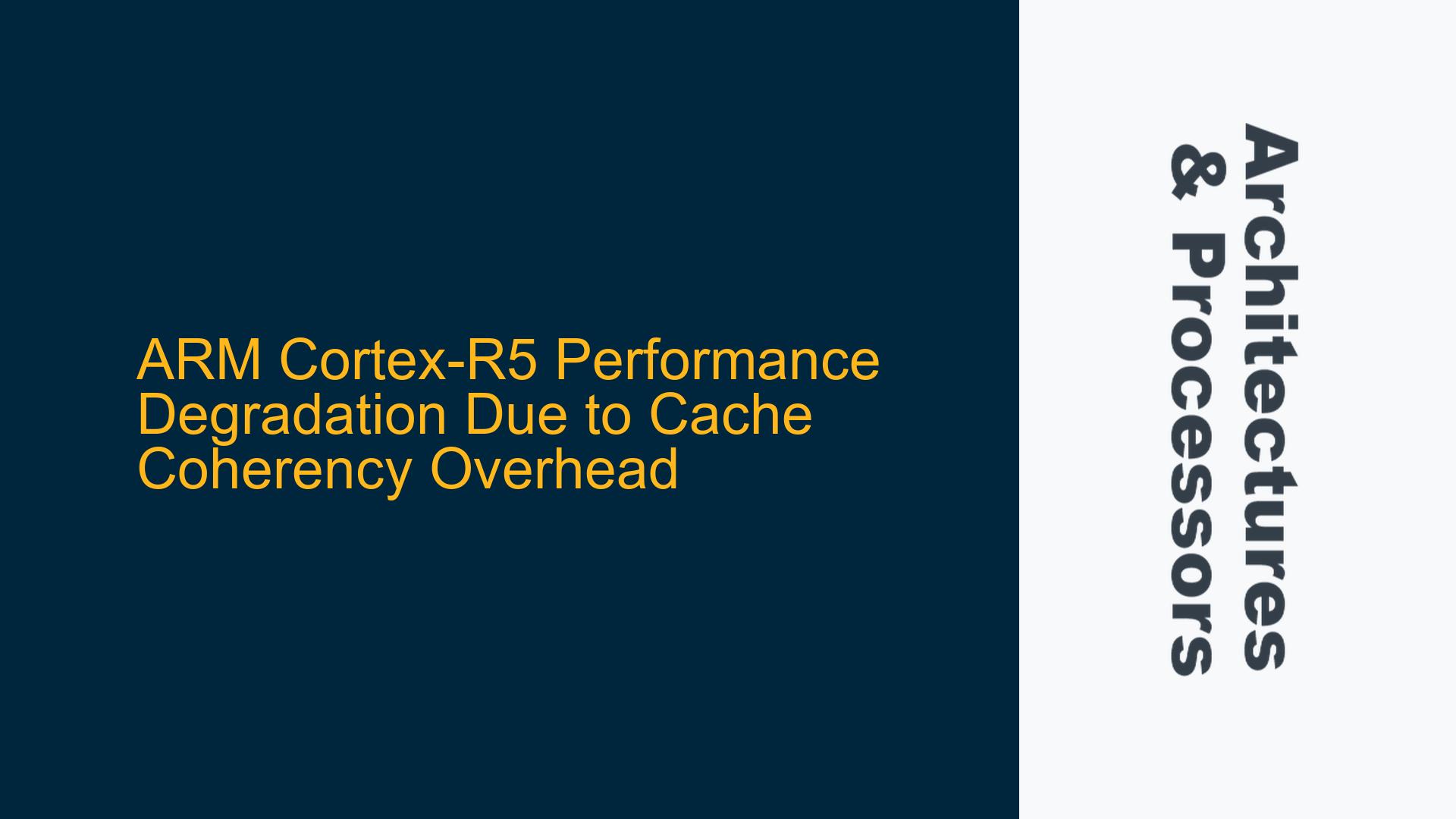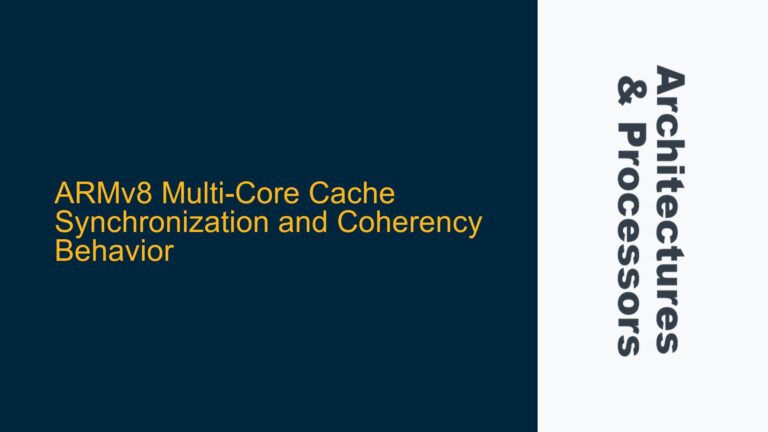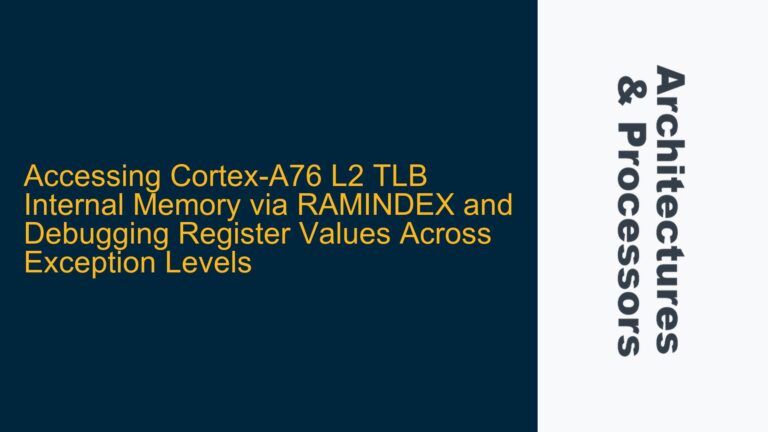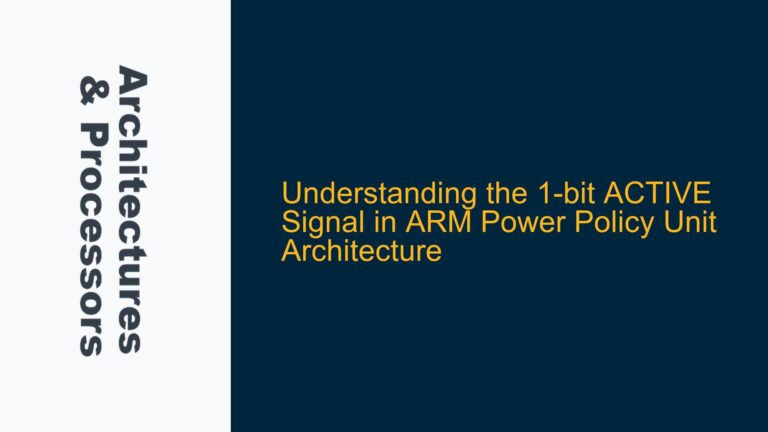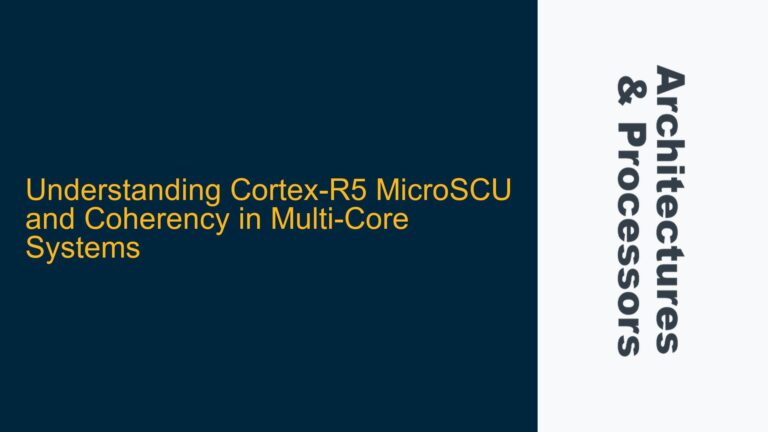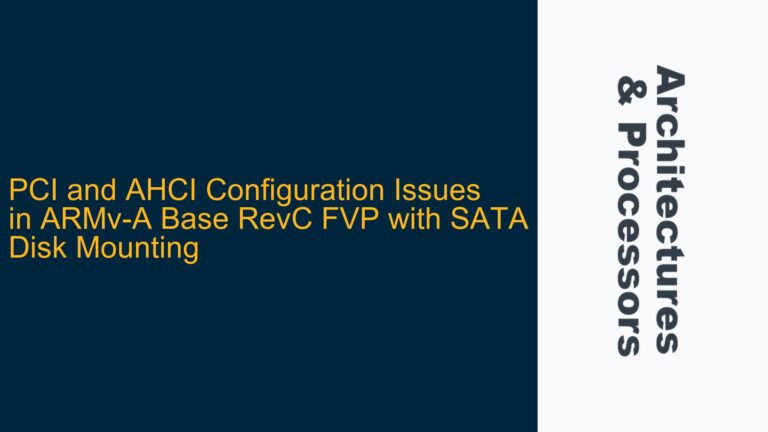ARM Cortex-R5 Cache Coherency Overhead and Performance Impact
The ARM Cortex-R5 processor, when integrated into a system-on-chip (SoC) like the Xilinx Zynq US+, can experience significant performance degradation when cache coherency is enabled. This degradation is particularly noticeable in scenarios where the Cortex-R5 is configured to snoop the caches of other processors, such as the Cortex-A53, via a Cache Coherent Interconnect (CCI-400). In the case described, enabling cache coherency resulted in a 20% performance drop in the Cortex-R5’s write rate, even when no other processors or system components were actively running. This performance hit is unexpected and suggests that either the cache coherency mechanism is not optimally configured or that there are underlying hardware-software interaction issues that need to be addressed.
Cache coherency is a critical feature in multi-processor systems, ensuring that all processors have a consistent view of shared memory. However, maintaining coherency introduces overhead, as the cache controllers must continuously synchronize data across multiple caches. In the Cortex-R5’s case, this overhead manifests as increased latency and reduced bandwidth, particularly when the processor is configured to snoop the caches of other processors. The Cortex-R5’s performance degradation is exacerbated by the fact that it is a real-time processor, designed for deterministic behavior and low-latency responses. Any additional latency introduced by cache coherency mechanisms can significantly impact its ability to meet real-time deadlines.
The Cortex-R5’s performance degradation is further compounded by the specific configuration of the Xilinx Zynq US+ SoC. In this SoC, the Cortex-R5 and Cortex-A53 processors share a common memory space, and the CCI-400 is used to maintain cache coherency between them. The Cortex-R5 is configured for one-way I/O coherency, meaning it can snoop the Cortex-A53’s caches but not vice versa. This configuration is intended to reduce the overhead of cache maintenance operations, such as cache cleaning and invalidation, which would otherwise need to be performed manually in software. However, the observed performance degradation suggests that the benefits of this configuration are being outweighed by the overhead of maintaining cache coherency.
CCI-400 Configuration and Cortex-R5 Snooping Behavior
The Cache Coherent Interconnect (CCI-400) is a key component in the Xilinx Zynq US+ SoC, responsible for maintaining cache coherency between the Cortex-R5, Cortex-A53, and other system components, such as the GPU and programmable logic (PL). The CCI-400 supports multiple coherency modes, including full coherency, I/O coherency, and non-coherent modes. In the case described, the Cortex-R5 is configured for one-way I/O coherency, allowing it to snoop the Cortex-A53’s caches but not the other way around. This configuration is intended to reduce the overhead of cache maintenance operations, as the Cortex-R5 can directly access data in the Cortex-A53’s caches without requiring explicit cache cleaning or invalidation.
However, the Cortex-R5’s snooping behavior introduces additional latency and bandwidth overhead, as the CCI-400 must continuously monitor and synchronize the Cortex-R5’s cache accesses with the Cortex-A53’s caches. This overhead is particularly pronounced in scenarios where the Cortex-R5 is performing frequent write operations, as each write must be propagated to the Cortex-A53’s caches to maintain coherency. The Cortex-R5’s performance degradation is further exacerbated by the fact that it is a real-time processor, designed for deterministic behavior and low-latency responses. Any additional latency introduced by cache coherency mechanisms can significantly impact its ability to meet real-time deadlines.
The Cortex-R5’s performance degradation may also be influenced by the configuration of the CCI-400’s coherency settings. The CCI-400 provides several configuration options, including the ability to enable or disable coherency for specific masters, configure the coherency mode (full, I/O, or non-coherent), and set the priority of coherency transactions. In the case described, it is possible that the CCI-400’s coherency settings are not optimally configured for the Cortex-R5’s workload, leading to excessive overhead and performance degradation. For example, if the CCI-400 is configured to prioritize coherency transactions over other types of transactions, this could result in increased latency for the Cortex-R5’s memory accesses.
Another potential issue is the interaction between the Cortex-R5’s cache configuration and the CCI-400’s coherency mechanisms. The Cortex-R5’s caches are typically configured as write-back and write-allocate, meaning that writes are initially stored in the cache and only written to memory when the cache line is evicted. This configuration can lead to increased coherency overhead, as the CCI-400 must ensure that any modified cache lines are propagated to the Cortex-A53’s caches before they are evicted from the Cortex-R5’s cache. If the Cortex-R5’s cache configuration is not aligned with the CCI-400’s coherency mechanisms, this could result in excessive coherency traffic and performance degradation.
Optimizing Cortex-R5 Performance with Cache Coherency Enabled
To address the Cortex-R5’s performance degradation when cache coherency is enabled, several steps can be taken to optimize the configuration of the CCI-400 and the Cortex-R5’s cache settings. These steps include:
-
Reviewing and Adjusting CCI-400 Coherency Settings: The first step in optimizing the Cortex-R5’s performance is to review the CCI-400’s coherency settings and ensure that they are configured appropriately for the Cortex-R5’s workload. This includes verifying that the coherency mode is set to one-way I/O coherency, as intended, and that the priority of coherency transactions is balanced with other types of transactions. If the CCI-400 is configured to prioritize coherency transactions too highly, this could result in increased latency for the Cortex-R5’s memory accesses. Adjusting the priority settings to reduce the impact of coherency transactions on the Cortex-R5’s performance may help to mitigate the observed degradation.
-
Configuring Cortex-R5 Cache Settings for Coherency: The Cortex-R5’s cache settings should also be reviewed and adjusted to minimize the overhead of maintaining cache coherency. This includes configuring the Cortex-R5’s caches as write-through rather than write-back, as write-through caches reduce the need for cache line evictions and subsequent coherency traffic. Additionally, the Cortex-R5’s cache allocation policy should be configured to minimize the number of cache lines that are allocated for write operations, as this can reduce the amount of coherency traffic generated by the Cortex-R5. Finally, the Cortex-R5’s cache invalidation policy should be reviewed to ensure that cache lines are invalidated only when necessary, as excessive cache invalidation can lead to increased coherency overhead.
-
Monitoring and Analyzing Coherency Traffic: To identify the root cause of the Cortex-R5’s performance degradation, it is important to monitor and analyze the coherency traffic generated by the CCI-400. This can be done using performance monitoring tools provided by the SoC vendor, such as Xilinx’s Performance Monitoring Unit (PMU). By analyzing the coherency traffic, it is possible to identify any bottlenecks or inefficiencies in the CCI-400’s coherency mechanisms and take steps to address them. For example, if the analysis reveals that the CCI-400 is generating excessive coherency traffic due to frequent cache line evictions, this could indicate that the Cortex-R5’s cache settings need to be adjusted to reduce the frequency of evictions.
-
Evaluating the Impact of PL Coherency Settings: In the Xilinx Zynq US+ SoC, the programmable logic (PL) is also part of the coherency mechanism, with two-way cache coherency between the Cortex-A53 and PL. This configuration can introduce additional coherency overhead, particularly if the PL is generating frequent memory accesses that require coherency transactions. To evaluate the impact of the PL’s coherency settings on the Cortex-R5’s performance, it is important to monitor the coherency traffic between the Cortex-A53 and PL and determine whether this traffic is contributing to the Cortex-R5’s performance degradation. If the PL’s coherency settings are found to be a significant factor, it may be necessary to adjust these settings to reduce the impact on the Cortex-R5’s performance.
-
Implementing Data Synchronization Barriers: In addition to optimizing the CCI-400 and Cortex-R5’s cache settings, it may be necessary to implement data synchronization barriers (DSBs) in the Cortex-R5’s firmware to ensure that coherency transactions are completed in a timely manner. DSBs are used to enforce the ordering of memory accesses and ensure that all pending coherency transactions are completed before proceeding with subsequent operations. By implementing DSBs at strategic points in the Cortex-R5’s firmware, it is possible to reduce the latency of coherency transactions and improve the Cortex-R5’s overall performance.
-
Benchmarking and Performance Tuning: Finally, it is important to benchmark the Cortex-R5’s performance with cache coherency enabled and compare the results to the performance observed with cache coherency disabled. This benchmarking should be performed under a variety of workloads to identify any specific scenarios where the performance degradation is most pronounced. Based on the benchmarking results, further performance tuning may be required to optimize the Cortex-R5’s performance with cache coherency enabled. This tuning may involve adjusting the CCI-400’s coherency settings, modifying the Cortex-R5’s cache configuration, or implementing additional optimizations in the Cortex-R5’s firmware.
By following these steps, it is possible to mitigate the performance degradation observed in the Cortex-R5 when cache coherency is enabled and ensure that the processor can meet its real-time performance requirements. However, it is important to note that cache coherency inherently introduces some level of overhead, and it may not be possible to completely eliminate the performance impact. In some cases, it may be necessary to carefully weigh the benefits of cache coherency against the performance trade-offs and determine whether the additional overhead is acceptable for the specific application.
In conclusion, the Cortex-R5’s performance degradation when cache coherency is enabled is a complex issue that requires a thorough understanding of the CCI-400’s coherency mechanisms, the Cortex-R5’s cache configuration, and the interaction between these components. By carefully analyzing and optimizing the configuration of the CCI-400 and the Cortex-R5’s cache settings, it is possible to reduce the impact of cache coherency on the Cortex-R5’s performance and ensure that the processor can meet its real-time performance requirements. However, it is important to recognize that cache coherency inherently introduces some level of overhead, and it may not be possible to completely eliminate the performance impact. Therefore, it is essential to carefully evaluate the trade-offs and determine whether the benefits of cache coherency outweigh the performance costs for the specific application.
 New:
New: 